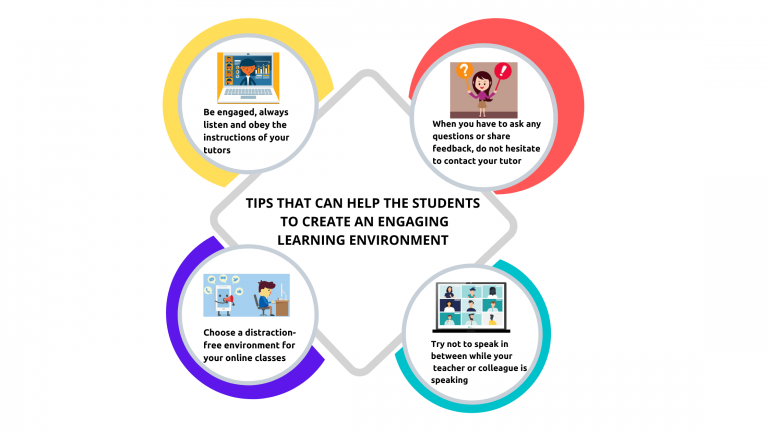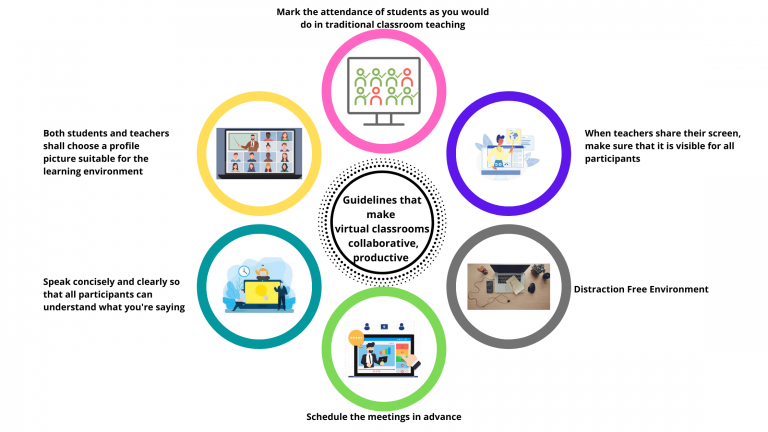views

Communication is simply the act of conveying both verbal and non-verbal messages. It is an interactive process that can take place in direct or indirect forms, through face-to-face or virtual means.
Virtual communication refers to communication that utilizes technology for interactions between people situated at different locations. The simplest example we can think of as virtual communication is communication through a telephone.
But today, technology has evolved. With the advent of the internet, digital media and smart devices, virtual communication has experienced a shift to an online mode of communication from traditional devices like the telephone and the Fax. This shift has led to a greater contribution to effective communication in education.
With the sudden shift to virtual classes during the pandemic, students and teachers are trying to navigate the virtual environment, in the best possible way. The ever-changing tools and technology have made instructors’ teaching process much easier. They contributed a smooth transition to virtual learning.
The importance of effective communication in online learning
During the last few years, the e-learning concept in educational institutes has changed from straight content delivery to an approach that gives importance to communication and collaboration. Online communication happens through different tools and communication channels such as LMS, video conferencing systems, podcasts, emails, blogs, SMS, phone calls, discussion forums, instant chats and push notifications. It can be in various forms such as course content delivery, personalized messages, Q&A sessions, feedback etc.
When communication becomes effective and efficient, it promotes learner success and fosters community. It is an important aspect that builds a positive relationship between the students and faculties, leading to improvement in their academic performance, exposing them to professional contacts, and maintaining long-lasting relationships.
As communication is virtual, students can feel less connected with their instructors. Online tools available today help the participants collaborate with greater flexibility and enhance the online class experience.
While online communication is beneficial in many ways, it creates a few challenges if it does not happen effectively. For the students, ineffective communication can lead to a lot of struggle in completing their courses. Tutors can also find it difficult to do their job when there is a barrier in communicating with students. So, the improvement goes both ways, a good communication strategy is essential for teaching and learning.
Developing timely and relevant communication with the students is important for an instructor. They can easily make the online environment a better place for learning with a little effort. Here are some basic guidelines that can help achieve great results:
Be patient and confident
Utilizing the applications built with modern technology can be challenging. It might take a little time for a person to get used to a new platform. Challenges can also be in program crashes, unstable internet and external disturbances. The instructor should be confident in such circumstances and motivate the students not to worry about such problems. Be patient and listen to the students. Include them in discussions, conduct group activities and encourage them to listen to their peers.
Be friendly
Being friendly with the students is an important quality that an instructor must have. It has great relevance in an online learning environment. Acknowledging students’ feelings, emotions, and opinions will improve their participation and keep them motivated. Make the communication personal by using their names, encouraging learners to share personal stories, setting aside time for off-topic chats and speaking with a tone of respect and friendliness.
Utilize a mixed-mode of communication
Using a variety of media such as texts, images, illustrations, audio and video helps facilitate interactive learning sessions. Each form is equally important in an online mode of education. For example, textual messages can be helpful for the learners to register information better. PDFs and presentations can be a quick reference. Video and audio messages help people feel more connected. Applications like Voicethread, Google Classroom, Wikis, Blogger, video conferencing Software and school apps can help in increasing the effectiveness of communication.
Conduct regular feedback sessions
Creating conversations like discussions, instant feedback and live feedback sessions can bring the participants together. Teachers can share feedback on student performance. At the same time, they can also ask for feedback from the students. Instructors shall take care in collecting and sharing important feedback in real-time. Try to use relevant words and always make your messages clear and concise. Tutors may utilize emails and other private messaging channels for individual or sensitive discussions.
Make use of non-verbal communication
A non-verbal form of communication is essential in classroom teaching and online education. Since the online classes are delivered via video conferences, instructors can utilize non-verbal cues like hand gestures, facial expressions, posture, eye contact etc. in their teaching sessions. To facilitate effective non-verbal communication, the instructors shall seat themselves in a space that supplies enough lighting with a neutral background. Online educational platforms support the use of digital non-verbal cues in the form of emojis and GIFs, so the instructors can also use such digital resources.
Discuss your communication strategy with the participants
Planning & developing strategies, deciding how, when and what to communicate, and discussing it with the students will help establish the workflow of your sessions. Try to include an overview of the channels/methods/tools used. It will be helpful if you keep a communication plan handy for future reference.
Maintain your hardware & Software

Online communication requires good hardware and software support. So, it is important to keep your hardware and devices in proper working condition. Whether it is your microphone, laptop, web camera or smartphone experiencing any problem, try to fix it soon, without any delay. Additionally, find good antivirus software for your system and invest in a better school app that helps to enable smooth communication with the students.
A positive and successful environment for smooth communication is created when there is enough cooperation from the students’ side apart from the contributions of instructors. Here are a few tips that can help the students to create an engaging learning environment:
» Be engaged, always listen and obey the instructions of your tutors.
» Choose a distraction-free environment for your online classes.
» Try not to speak in between while your teacher or colleague is speaking.
» When you have to ask any questions or share feedback, do not hesitate to contact your tutor.
» Do your best to maintain your hardware, software, internet connection and devices.
Like traditional classrooms, virtual learning is a formal learning environment where appropriate behaviour and effective communication are observed. Hence, digital etiquettes or ‘netiquettes’ (a new term coined for defining etiquettes in an online environment) are essential to fostering effective communication and maintaining a pleasant online teaching and learning environment.
Why do instructors need to follow virtual class etiquette?

The set of rules or appropriate behaviour from the instructor’s side is key to moderating a class and providing a meaningful experience to the learners. Students have varying notions on how to behave in an online class. So, for a virtual tutor, it will be a great chance to show them, by example, what professional and respectful behaviour is.
Learning about the dos and don’ts in online tutoring help in safely using digital technology and media with responsibility and ethics. It also brings discipline, improves collaboration and boosts the productivity of an instructor. When teachers follow proper etiquette, they’ll be setting a good example for students. Those basic ‘codes of conduct will help to prevent major issues such as student misbehaviour, distractions and communication gap.
Now, let’s explore some important guidelines that make virtual classrooms collaborative, productive and comfortable:
» Teachers should mandate the entry of only verified students with a proper profile. Both students and teachers shall choose a profile picture suitable for the learning environment. Always make sure that meeting links are shared with the right students and all of them have received accessible links. Mark the presence and absence of students as you would do in traditional classroom teaching.
» During online classes, the students may tend to share the screen unnecessarily. Teachers shall take care in disabling the sharing of student screens (if the program supports that feature) when not required. When teachers share their screen, make sure that it is visible for all participants. If you have presentations such as video, pdfs. etc that can be visually dense while screen sharing, consider distributing it to participants in advance.
» Decide on a particular space at home where teaching can be done easily, without distractions like the noise of televisions, people speaking etc. Keep your cell phones in silent mode and make calls only when necessary or in an emergency. Make sure your background is work appropriate.
» Schedule the meetings in advance. Always be punctual in attending the meetings. Dress up formally and be well prepared for taking classes. Prepare the teaching material beforehand and keep all teaching aids handy before the commencement of class. The teachers shall leave only at the end of the meeting (after all the students have signed out).
» Speak concisely and clearly so that all participants can understand what you’re saying. When you are not talking, you may mute the mic so that the ambient noises from your surroundings may not cause any distractions. Students shall be allowed to comment or speak only if they have legitimate questions. Unnecessary comments and questions can be an obstacle to the teaching process. Establish an understanding among the students of how and when to interrupt.
» Keep your video and audio on and ask the students to do the same whenever necessary. Use the camera to create eye contact with the students. Make sure that you are visible and audible to all students. Check with the participants about any network or connectivity issues and correct them for the next meeting. These steps ensure whole class participation and effective communication.
» During the meetings, take pauses occasionally, so that attendees have time to make discussions and clear their doubts. For communication pre/post online meetings, fix a convenient time according to your availability. The teaching time should be used judiciously and manage the usage time of digital devices.
» Use polite conversations in your communication. Do not use tones of harassment, humiliation, bullying or sarcasm as it can create a threatening feel among the students. Build trust and motivate the students on learning the courses. Take care, not to share confidential information and unwanted messages with the students. While typing a text in the chatbox, check for spelling and grammatical errors before it is sent.
The online environment provides an opportunity for the tutors to connect with the students, collaborate with them and most importantly, teach them in the best way possible. By following the basic etiquettes of online tutoring, a teacher will establish a class that is actively engaged, productive and well disciplined.
Effective communication in online classes should be a top priority for instructors. Developing a communication strategy for effective communication comes with experience and time. With slight changes in your approach and adoption of the right tools/methods, you can cultivate habits that will be definitely helpful in making the online classes more engaging and interactive.












